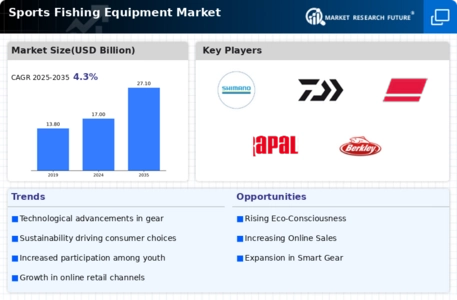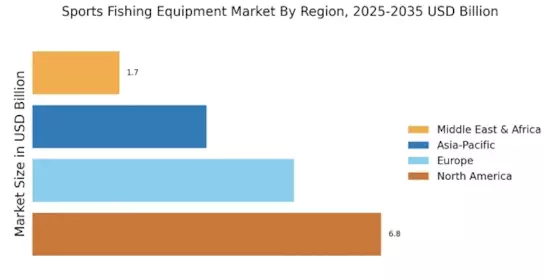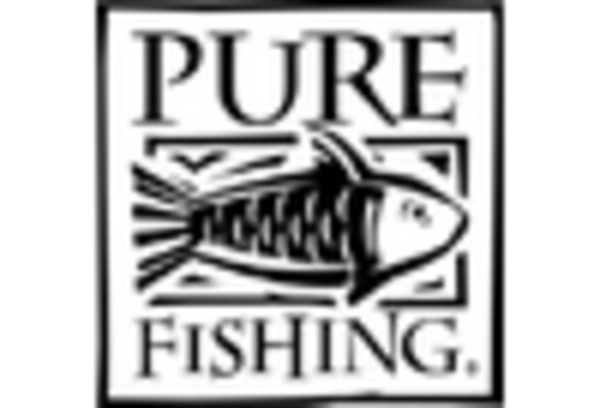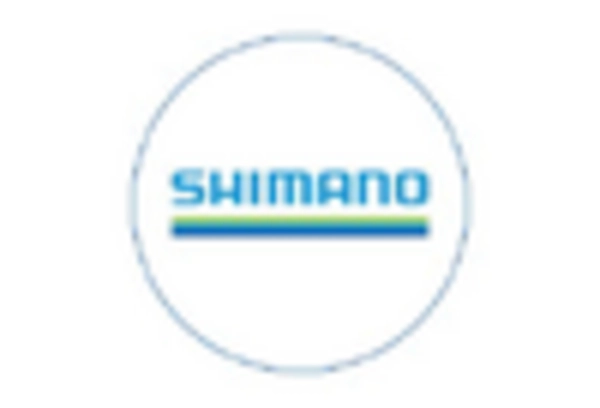Increase in Fishing Tourism and Travel
The rise in fishing tourism and travel is emerging as a significant driver for the Sports Fishing Equipment Market. As more individuals seek unique travel experiences centered around fishing, destinations known for their fishing opportunities are witnessing increased visitor numbers. This trend is encouraging local businesses to invest in fishing gear rentals and guided fishing tours, thereby stimulating demand for various fishing equipment. Market analysis suggests that fishing tourism has grown by approximately 12% in recent years, indicating a robust interest in fishing as a travel activity. This growth not only benefits local economies but also creates opportunities for manufacturers within the Sports Fishing Equipment Market to develop specialized equipment tailored for travel and tourism. As fishing becomes a key component of travel itineraries, the market is poised for further expansion.
Technological Innovations in Fishing Gear
Technological advancements in fishing equipment are transforming the Sports Fishing Equipment Market. Innovations such as smart fishing rods, advanced sonar technology, and eco-friendly materials are becoming increasingly prevalent. These developments not only enhance the fishing experience but also attract a younger demographic that values technology. For instance, the integration of GPS and fish-finding technology into fishing gear has made it easier for anglers to locate fish, thereby increasing their chances of success. Market data suggests that the segment of high-tech fishing gear is expected to grow at a compound annual growth rate of 8% over the next five years. This trend indicates that consumers are willing to invest in advanced equipment that improves their fishing efficiency and enjoyment, thereby driving the overall market.
Rising Participation in Recreational Fishing
The increasing interest in recreational fishing activities appears to be a primary driver for the Sports Fishing Equipment Market. As more individuals seek outdoor activities for leisure and relaxation, the demand for fishing gear has surged. Recent statistics indicate that participation rates in recreational fishing have risen by approximately 10% over the past few years. This trend suggests a growing appreciation for fishing as a family-friendly activity, which in turn fuels the need for diverse fishing equipment. The Sports Fishing Equipment Market is likely to benefit from this trend, as manufacturers expand their product lines to cater to both novice and experienced anglers. Furthermore, the rise of fishing tournaments and community events may further stimulate market growth, as participants require specialized equipment to enhance their fishing experiences.
Expansion of E-commerce Platforms for Fishing Gear
The expansion of e-commerce platforms is reshaping the Sports Fishing Equipment Market. With the increasing reliance on online shopping, consumers are now able to access a wider range of fishing equipment than ever before. E-commerce platforms provide convenience and often better pricing, which appeals to a broad audience. Recent data indicates that online sales of fishing gear have grown by approximately 20% annually, highlighting a shift in consumer purchasing behavior. This trend suggests that traditional brick-and-mortar stores may need to adapt to the changing landscape by enhancing their online presence. The Sports Fishing Equipment Market is likely to see continued growth as e-commerce becomes a primary channel for consumers seeking fishing gear, thereby increasing competition and driving innovation among manufacturers.
Growing Awareness of Sustainable Fishing Practices
The rising awareness of sustainable fishing practices is significantly influencing the Sports Fishing Equipment Market. As environmental concerns become more pronounced, consumers are increasingly seeking equipment that aligns with eco-friendly practices. This shift is prompting manufacturers to develop sustainable fishing gear, such as biodegradable fishing lines and recyclable tackle boxes. Industry expert's indicates that the demand for sustainable fishing products has increased by 15% in recent years, reflecting a broader trend towards environmental responsibility. This growing consumer preference for sustainability is likely to shape product offerings within the Sports Fishing Equipment Market, as companies strive to meet the expectations of environmentally conscious anglers. Additionally, partnerships with conservation organizations may further enhance brand reputation and consumer loyalty.


















Leave a Comment